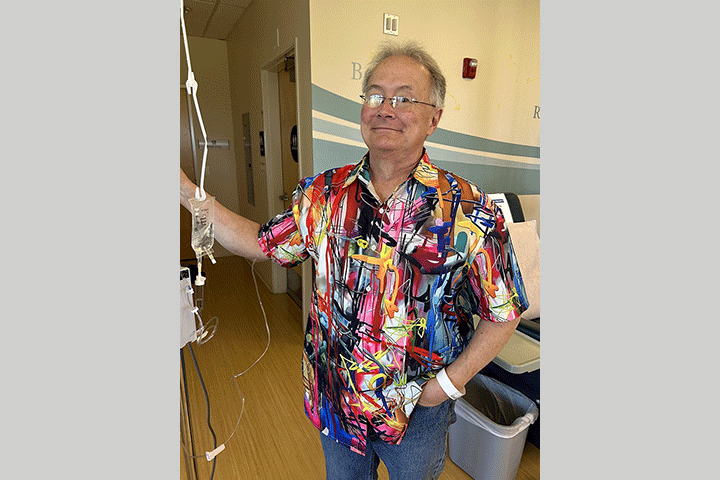Carefully Choosing My Doctor

The Witches of St. Andrews’ Doris Bowdoin (third from left)
- Jaundice leads to pancreatic cancer diagnosis
- Researching to choose a doctor
- Whipple procedure followed by chemotherapy
My name is Doris Bowdoin, my age is 75, and I am a six-and-a-half-year pancreatic cancer survivor.
In October 2014, I was diagnosed with stage III pancreatic cancer with superior mesenteric vein invasion. Six of 11 lymph nodes tested positive.
Prior to diagnosis I had no visible symptoms. I celebrated my 70th birthday with a large party on September 20th, 2014. Shortly after that I became jaundiced—my eyes were yellow. My doctor sent me for an evaluation with gastroenterologist Dr. Mariusz Klin in Panama City, Florida, where I live and was diagnosed with pancreatic cancer.
Choosing My Surgeon
Although I was getting weaker, I started researching treatment options. My sister was treated for ovarian cancer at UAB (University of Alabama Birmingham) Medicine, and her doctor recommended Dr. Sushanth Reddy and the pancreatic department there. I looked him up and found he did his internship and training at Johns Hopkins (Baltimore, Maryland). He also performs many Whipple procedures each year. Because it is a long and complicated surgery, I was looking for a doctor with knowledge and experience in this area.
Dr. Reddy required me to stay at UAB for two weeks due to my weakened state before having the Whipple surgery. I was admitted on October 21, 2014, to UAB and had surgery on October 31.
Due to complications including malnutrition, a feeding tube was inserted and I remained at UAB for three weeks. I was discharged on November 17, 2014, with the feeding tube still intact. I was on a lot of medications when I left the hospital, including pain medications, pancreatic enzymes, antibiotics, and drugs to manage various digestive issues.
Next Step Chemotherapy
In February 2015, I started chemotherapy with Dr. Kun F. Lu (now deceased) in Panama City, Florida. I had four cycles of FOLFIRINOX, but my treatment was complicated by dehydration and pneumonia that required hospitalization at UAB that same month. An adjustment was made to my feeding tube and the severe diarrhea was managed and I was released. I was taken off the feeding tube two weeks later. After that I transitioned to Abraxane and Gemzar for an additional two cycles.
In July 2015, I had a follow-up PET scan that showed no evidence of the disease. I had imaging every three to six months for four years. Now, after five years, I have imaging once a year.
An Active Life, with Advocacy
I am an active six-and-a-half-year survivor and doing great. The only medication I take now is Creon with meals and snacks. The Whipple surgery is not an easy path to say the least, but I feel it saved my life. Only a small percent of pancreatic cancer patients qualify for this surgery, since the cancer has to be in a certain area of the pancreas and the tumor cannot have spread. My thoughts are with everyone fighting this terrible disease and my prayer is that one day a cure will be found.
I helped form a charitable organization in Panama City called the Witches of St. Andrews—I am the treasurer of the group. The Witches dress up like Halloween witches and host a charity bicycle ride in late October to raise funds for the Nikki Mitchell Foundation, an organization that aids in research and patient financial care for pancreatic cancer patients.





